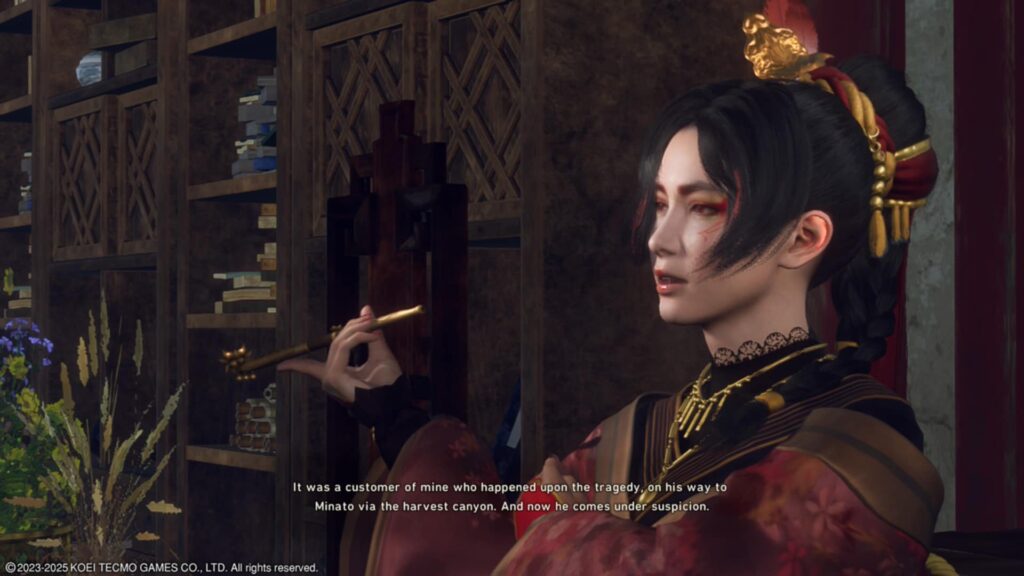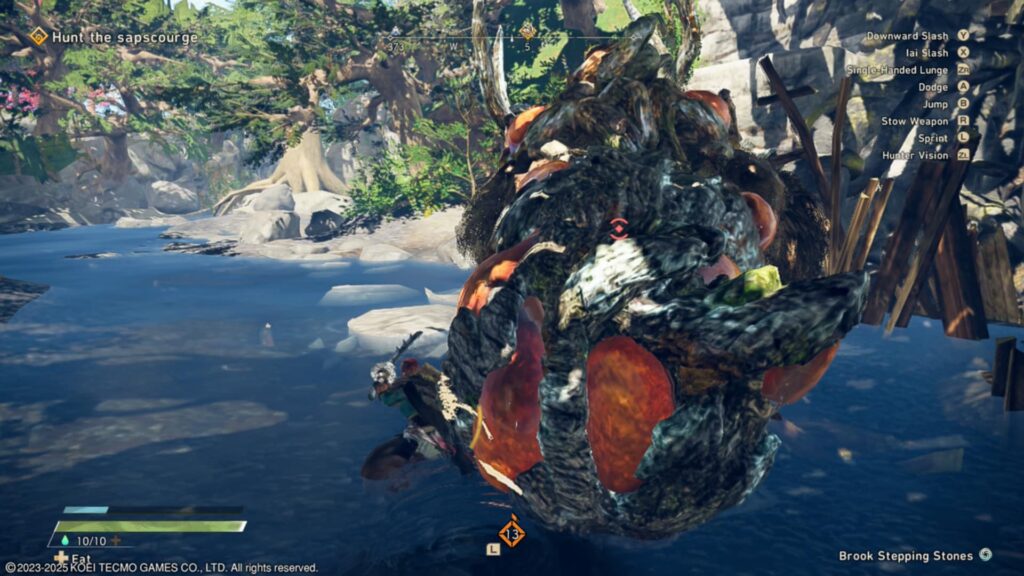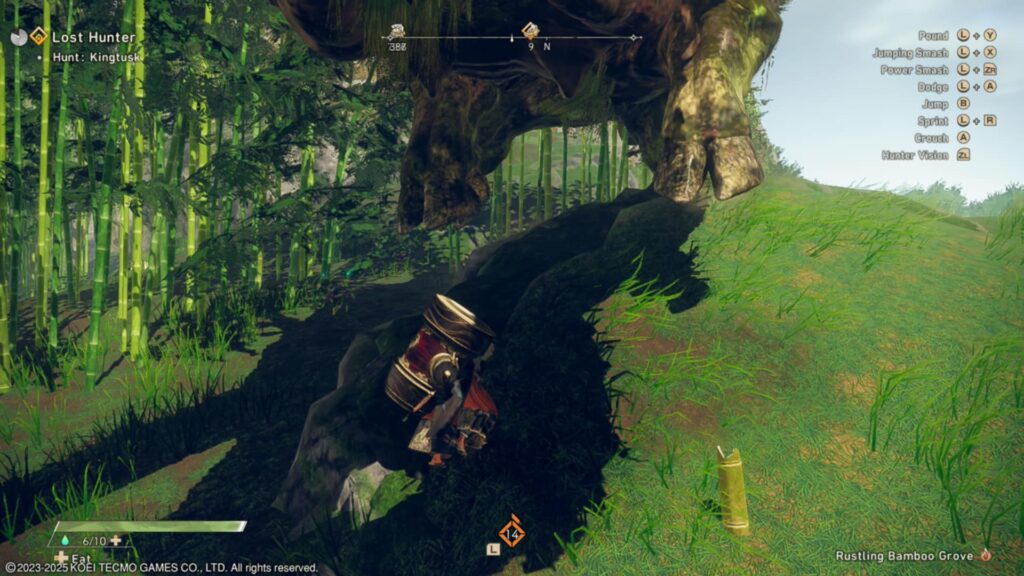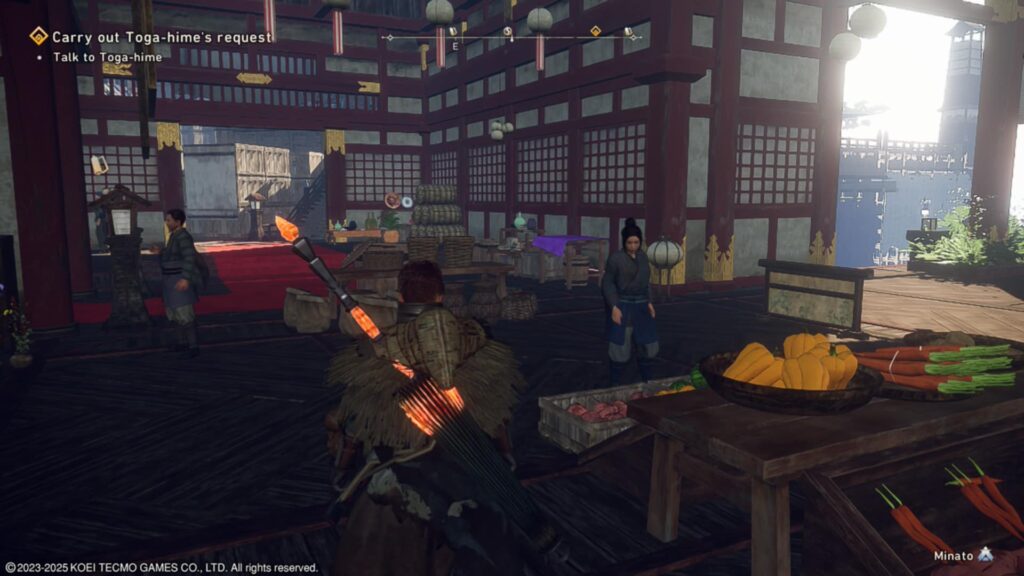Initiation is the sincerest form of flattery, or so they say. In the video game industry, it is also a prevalent practice for a game developer to hit the nail on the head, have a winning combination, and for others to take notice and try their hand at the same. It’s a double-edged sword to attempt this, though, with something so readily apparent to compare your game to. Thus is the case with Wild Hearts S, the Nintendo Switch 2 port of the console game from Koei Tecmo studio Omega Force (yes, the Dynasty Warriors team), which drew heavy inspiration from the Monster Hunter series a few years ago. Wild Hearts S isn’t the first game to attempt the big monster long battle formula. I have also been partial to the God Eater series myself, but in fairness, this is the closest replication to the formula you will see out there, drawing mostly from Monster Hunter World, which itself revitalized that long-running series.
So close is the concept that here you are also called a Hunter, that makes your money and fame by hunting down the creatures of this world and slaying them. This being said, the creatures you are hunting have some of the best designs in the genre, even when compared to the game that will draw most comparisons. Kemono, as they are known, are beasts that have in some way evolved through a merger with nature; as such, these creatures have familiar forms, such as looking like a mouse or a boar, but then diverge into the fantastical, being covered with roots that form a tail, or a tail that looks like a walnut. These enemies use these features to great effect, as well as getting nature-based AOE attacks like summoning roots from the underground to hit for massive damage.

From this, the formula is going to be very familiar to people who have played a game in this genre. The player takes hunts from a menu, which sets a time limit for the completion of this task, usually 60 or 30 minutes. The player then goes out into the open maps with their best gear, hunts down the kemono they decided to slay, then does just that, getting parts of the monster as compensation, which they can use to build better gear in lieu of leveling. The twist to this formula that Wild Hearts S brings to this formula is the lack of a traditional hub area where you take these tasks and prepare. When you first start your journey, you are already on the map where you will hunt early game monsters, with camping areas serving as actual bases for you to upgrade gear and raft armor, while taking hunts. You do eventually unlock a city, but this doesn’t become the hub, with literally everything being doable at any location you want.
Working from the field requires you to unlock several locations around that give you material to place Karakuri around to help you; these abilities quickly become the star mechanics of the game. An early item you can place, for instance, are towers that can be placed around the map to create a search grid for Kemono that are wandering around. Taking a hun requires this since, as you might get an area where your quarry is, these towers will help you pinpoint them, or even the location of a quest you took, if you need to find a specific item. Other things you can place are additional tents, so you don’t need to run all the way back when a monster destroys you. This becomes a significantly more important element when you realize Wild Hearts S doesn’t have a mount to quickly return to combat, something that does create some frustration in the overall experience.

Instead of these, certain Karakuri serve both traversal and combat functions that allow you to move quickly across the map. Blocks can be placed to springboard you up cimbale cliffsides without needing to struggle, or an actual springboard can bounce you across a gap. The best one by far is a glider that lets you leap off cliffs safely and clear large distances as you slowly descend. These items are also incredibly useful in combat, giving you the opening for moves you wouldn’t expect. In a fight with a Gritdog, for instance, I accidentally placed one while trying to dodge, only to spring over his flip, which destroyed my box, only to came crashing down on his stomach with a hard-hitting attack. You will also learn special combinations using a multitude of these karakura in a pattern to make walls or spring-loaded hammers that are honestly insanely fun to bring into fights with Kemono you have already beaten, just to see how these can change the flow of the fight in your favor. These tools have a massive window for leveling, which is very cool, but can often feel redundant with upgrades that can take a while to unlock, feeling only marginally beneficial.
Combat in Wild Hearts S also feels great, focusing on fast and flashy combos that can easily blend light and heavy attacks into a string of hits against the Kemono. I became partial to the Bladed Wagasa, an umbrella that deals light damage on the ground but gives a damage buff while you float through the area with it open. How do you achieve this? Start hitting with light attacks into a heavy forward thrust that is followed up with an upward jump that lets you float down, slashing all the way on top of them. Weapons like the hammer will be bigger and slower, so you can trade that out if you prefer heavy damage over strong combos and mobility, but in fairness, I never stayed with the same weapon for long as each felt unique in your hands and all around fun to figure out. Weapons, too, have massive upgrade trees that feel incredibly daunting, especially given how often the game caps your progress behind a resource you can’t get without a lot of story progress past where you are.

The biggest drawback to combat is the camera, which can often become a clunky and cumbersome tool, making it hard to even see what is happening. One early enemy in particular, a large boar Kemono named Kingtusk, takes up almost 90 percent of the screen any time you try to fight it. Better yet, dodging out of the way of his attacks is more likely to throw the camera directly into its model, blinding you to anything except its completely hollow stomach. It can be hard also even when you and the enemy are staring each other down, as telltale animations for certain moves can occur just off-screen, so you miss your cue to dodge completely. The lock-on function allows you to keep your target somewhat in view, but these moments still occur frequently.
Once you reach the town for the first time, you unlock side quests that feel more like an imposition rather than an extension of fun. These range from being sent to slay a monster, this time for somebody I need to report back to, all the way to collecting materials I literally never lacked enough to complete the quest on the spot. There are a few chains in here to offer an interesting narrative, but these tasks ask you to just do more of what you are already doing. Don’t get me wrong, I’m enjoying what I’m doing, I was just hoping you would ask me to do something else for a brief moment in there. The game already unlocks additional hunts you can undertake after beating monsters, and the hunts that are unlocked, so it’s not like I don’t already have a series of side tasks I can undertake to hun monsters, and it’s not like these sidequests unlock special variants of monsters I’m familiar with. Where it gets slightly more annoying, and funny, honestly, is when you get a sidequest like investigate where somebody was killed, thinking this will be like an investigation type quest, that’s new after all, only to get jumped by a Kemono in the most gotcha moment out there that you really should have seen coming.
Wild Hearts S, being a Nintendo Switch 2 port, is a degraded version of a more powerful version, but this compromise was made to make the product run great. I think I made mention in my Cyberpunk 2077 review that the biggest issue with the Switch 2 is pixelation on shaders, especially here with shadowing from the environment. Textures also have some, as the finer details can look a little muddy. The trade off here was an experience that doesn’t often dip in framerate, which is important, given that and given attack from you hunt can drain half your life. This is why, while you might be tempted to look at a downgrade to graphics as a negative, I would argue the port team understood the most important parts of the experience and made sacrifices in order to achieve that. There was no point hunting; Kemono was not a fun experience.

Verdict
Wild Hearts S makes the mistake, I feel, of copying the Monster Hunter formula too closely. There are times where the loop overlaps so clearly that it might make somebody who is often on the beaten path, having just beaten Wilds, for instance to ask themselves, Why am I just not grinding gear in that. The level design here is great, with Karakura being encouraged due to the verticality of exploration, but it’s still a big open map with big monsters you are out there to hunt. Even the story gives flashes of ones I have played before. The reason this is so glaring, though, is that Wild Hearts S is actually a very competent gamer in its own right. Koei Tecmo created a game with great combat and monsters that you can easily get lost in, continuing till you are the greatest hunter alive, master of the Karakuri, with all the best gear to boot. It was also released at a great time, with the Nintendo Switch 2 having a lack of games like this as a native port for it, not including the 7 years of released titles on the OG Switch. This is a great addition to the growing library of the platform and one that, when you’re looking for a new game to start and thinking you have already completed everything the system has to offer, is well worth your time.
Remember to follow us on Twitter, Facebook, and Bluesky to keep up to date on everything we have going on!
Reviewed for Nintendo Switch 2
A code was provided for the game by KOEI TECMO America for the purposes of this review.
Developer: Omega Force
Publishers: KOEI TECMO
Release Date: July 25, 2025
Good:
+Combat
+ Exploration
+Enemy Design
+Karakuri
+Runs Great
Bad:
-Cumbersome upgrade menus
-Camera
-Bland Side Quests
-Wears inspiration to closely
-
Wild Hearts S